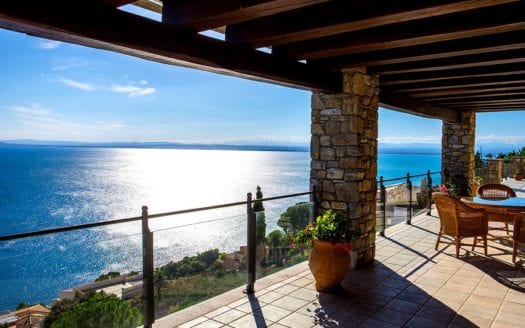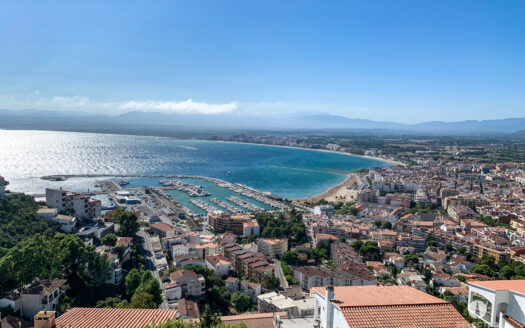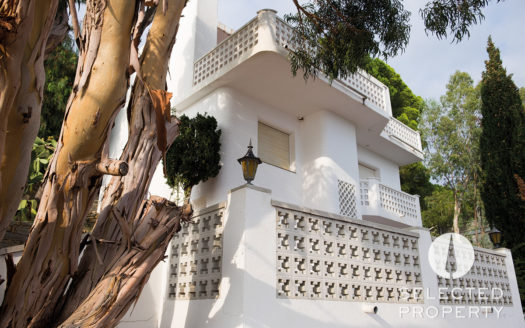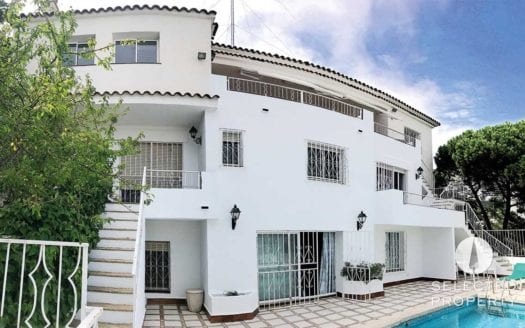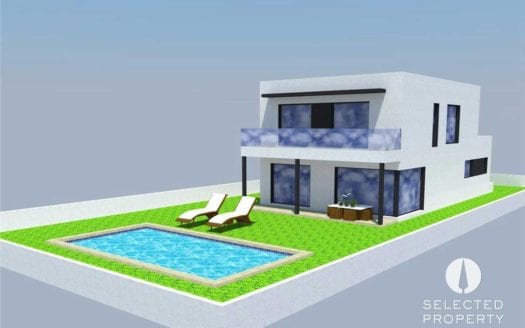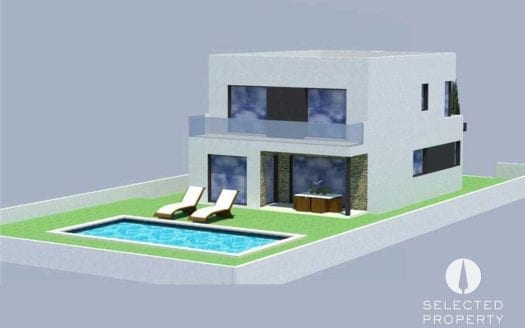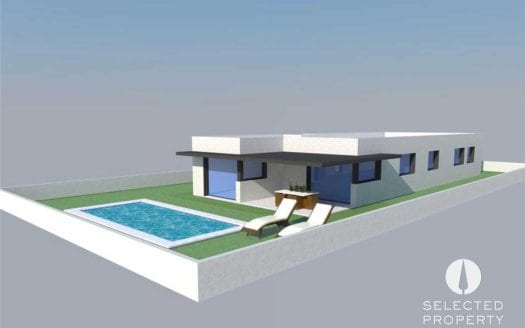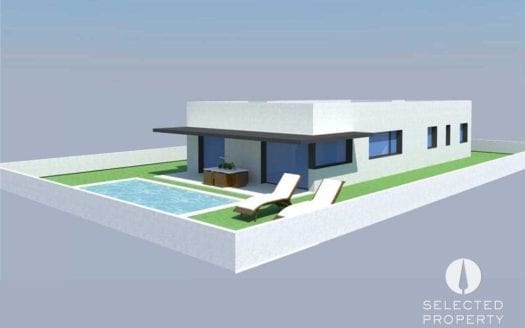NEW 25% price reduction – Jewel at the...
Apartment hotel with spectacular sea view at...
Overlooking the sea: Penthouse in Roses for ...
House with sea views in a fantastic location...
Canyelles Roses – exclusive mansion wi...
Information about Roses
Roses - The location is unique
Roses was a fisher´s village until the fifties. Then the tourism boom started on the Costa Brava. With tourism the village expanded. Nowadays the urbanisation reaches way out of Roses. Mountains and the surrounding bays became the summer domicile for many people from the city and Northern Europe.
In Roses live about 15.000 inhabitants permanently, among those many foreigners, who have found a livelihood or spend their pensionist days here.

During the summer the amount of inhabitants in town rises to approximately 90.000. Then there is a lively atmosphere on the beaches and in the small bays of Roses.
Villas with spectacular sea views
There is an unbroken demand for real estate on the steep hilly sides of Roses. The prices have been rising for years and new buildings are constantly emerging. For example in Puig Rom: here exclusive detached family houses are built with swimming pools and sea view, starting from 530.000 Euro. Villas with spectacular sea views can hardly be found under 1 million Euros.
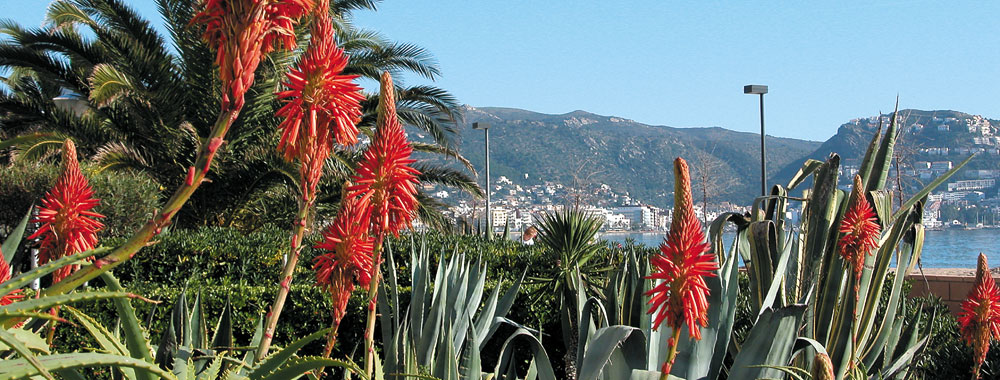
The wild coast
The wild coast scenario of the bay of Roses is best seen from the lighthouse by foot on “Camí de Ronda“.
The lighthouse of Roses was equipped with a 500 watt light in 1921. 38 metres away from the sea, his light shines night after night near the rock “La Bateria“. The lighthouse is situated a little beneath the fortification of Trinitat – a military installation from the 16th century.
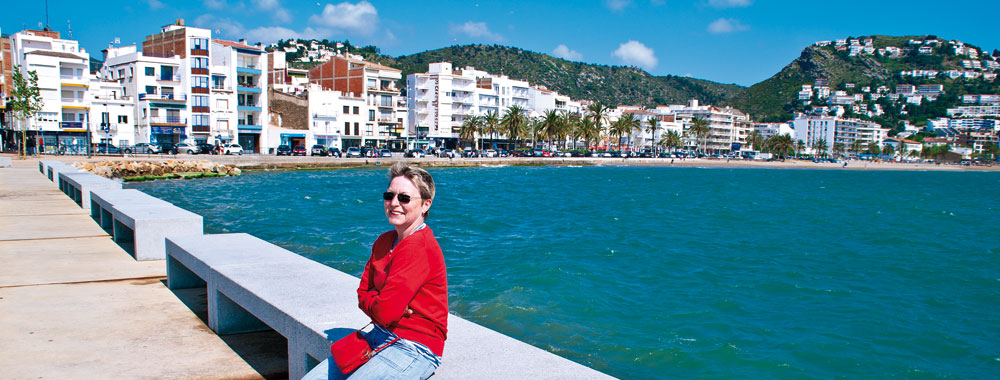
Bay of Almadrava
Just off the coast of Canyelles Petites a small island, built from different cliffs, the so-called Brancs, juts out from the sea. Seagulls and cormorants dry their feathers here in the sun. Within the Canyelles Petites you can find the only 5 * Hotel of the Northern Costa Brava- the “Vistabella” with its exquisite restaurant “Els Brancs“.
Between the Canyelles– and the Almadrava-beach two rocks reach into the sea- the “Punta de l’Omella“ and the “Punta de l’Ullastrell“.
The final destination on our small hike is the bay of Almadrava with its 400 metres long sandy beach. “Almadrava” or in Spanisch “Almadraba” is the expression for a special fishnet, which is used for the fishing of tuna.
Typical Mediterranean shrubs
The final destination today for us on our small hike is the bay of Almadrava with its 400 metres long sandy beach. “Almadrava” or in Spanisch “Almadraba” is the expression for a special fishnet, which is used for the fishing of tuna.
If you have good condition, you can continue here: The seaside path «Roses -> Cala Montjoi» follows a narrow path at the water’s level between Almadrava beach and Cala Montjoi cove, bordering cliffs and sheer rock faces interspersed with pine groves and typical Mediterranean shrubs. It’s an ideal route for refreshing yourself in any of the coves and beaches along the way, taking a dip in the sea in the summertime. The seaside path begins at the last house on Carrer Gauguin in Almadrava, which is also where the Cap de Creus Natural Park begins.

About 1 km into the route you will reach Punta Falconera (“Falcon’s Point”), so named because of the presence of falcons some years ago. This point was occupied by the military until the 1990s because of its interest as a strategic enclave, as it offers a view that dominates the Bay of Roses. As a result of the military use of the area, there is a network of underground galleries and walkways that are connected to the surface through bunkers with artillery batteries and slits through which the mouths of the artillery pieces once projected. Past Punta Falconera, the path rises and drops with the sharp coastline, crossing through pine groves and cliffs along the sea, along with a number of well-defined coves.The first of these is Cala Lladó.
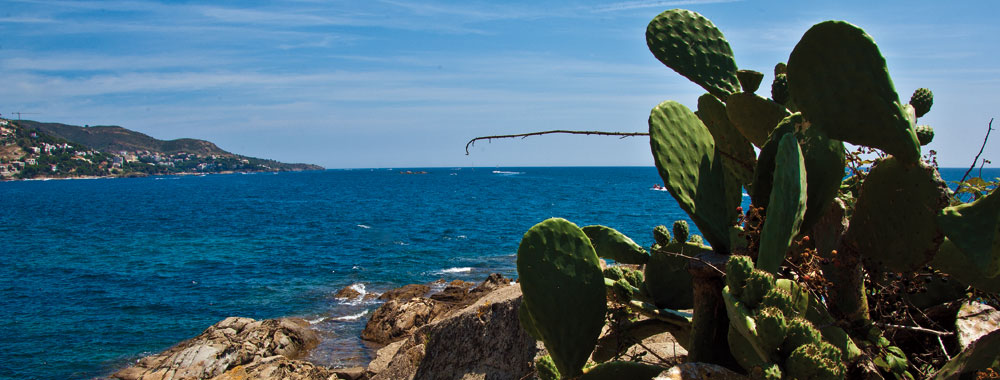
The quarry, still visible, was used to extract marble, which was then transported by sea to Roses. The ramp and the landing stage where the marble was taken down to the boats at sea level can still be seen today. After Cap Trencat (literally, “Broken Cape”), which owes its name to the rocks that have broken off over time and fallen into the water, you reach Cala Murtra (a cove where nudism is allowed), named after the Mediterranean myrtle (“murtra” in Catalan), the area’s predominant vegetation. Beyond Cala Murtra lies Cala Rostella, the two coves separated by the Cap Blanc cape. There are numerous shoals along this section of the coast, dangerous rock formations lurking just below the surface of the water that for centuries had caused shipwrecks. The area is now popular among scuba divers.



